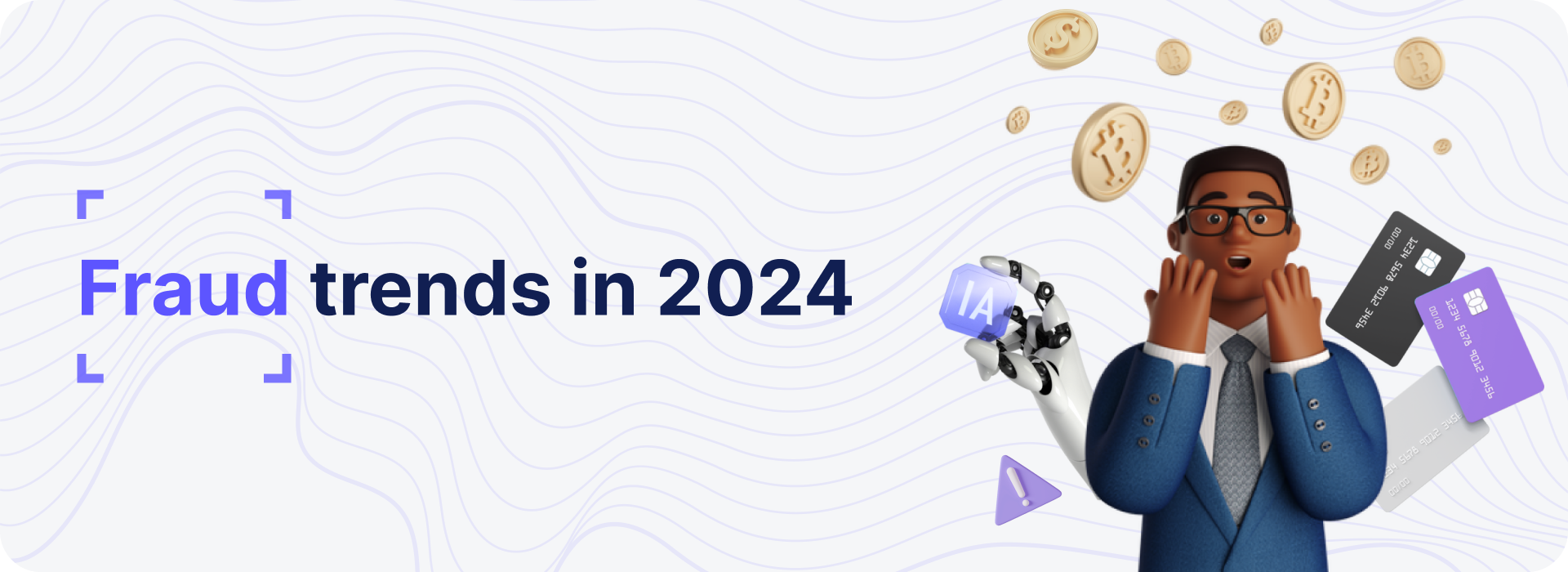Just like technology and social trends, the fraud landscape is continuously evolving. As new tools and technologies emerge, fraudsters are finding new ways to trick people into scams. From fake social media profiles to sophisticated phishing scams, the methods used to commit fraud are becoming more advanced and harder to spot.
As these fraud tactics evolve, it is important to stay informed about the latest trends. By understanding these trends, you can better guard against the latest threats and keep your personal and financial information safe.
- Deepfake scams

Deepfake scams have emerged as a particularly insidious threat in 2024, utilizing advanced artificial intelligence to create highly realistic yet fabricated audio and video content. Fraudsters use deepfake technology to impersonate individuals such as executives, family members, or public figures, often to deceive victims into transferring money or disclosing confidential information. The authenticity of these deepfakes can make them difficult to detect, as they mimic the voice and appearance of trusted individuals with alarming accuracy.
To protect yourself from deepfake scams, always verify unexpected video or audio messages by calling the person directly using a known phone number. Avoid acting on any urgent requests without confirmation, be cautious with personal information and look out for signs of manipulation in media content, such as unnatural facial expressions, inconsistent lighting or shadows, mismatched lip movements, and audio that doesn’t match the speaker’s usual tone or speech patterns.
- Account Takeover

In 2024, account takeover has surged as a pressing threat, with cybercriminals ramping up their efforts to infiltrate both personal and business accounts. Through techniques such as phishing, data breaches, and password theft, fraudsters can hijack accounts to steal sensitive information, commit fraud, or cause significant disruption. Once they gain control, they may use the compromised accounts to launch further attacks or impersonate the victim to exploit their contacts and resources. The growing sophistication of these attacks makes them harder to detect, as attackers often use stolen credentials and biometric data to bypass traditional security measures.
To protect yourself from account takeover, use strong, unique passwords for each of your accounts and enable two-factor authentication wherever possible. Regularly monitor your accounts for unusual activity, such as unauthorized transactions or login attempts. Be cautious about clicking on links or downloading attachments from unknown sources, as these could be phishing attempts. Additionally, keep your software and security systems up to date to defend against vulnerabilities that attackers might exploit.
- Synthetic Identity

Synthetic Identity fraud is becoming a significant issue, as fraudsters increasingly blend real and fictitious personal information to create false identities. They often use real identification details, such as personal identification numbers alongside fictitious data to craft convincing but fraudulent profiles. These synthetic identities are then used to commit financial fraud, such as opening bank accounts or securing loans. The seemingly legitimate nature of these identities can make them difficult for traditional verification systems to detect, posing a significant risk to individuals and institutions alike.
To protect your personal information, regularly monitor your bank statements and other financial accounts for any unusual or unfamiliar activity. Be cautious when sharing personal details and ensure that any institutions handling your data have strong security measures in place. If you suspect your information may be compromised, inform relevant authorities. Additionally, consider regularly updating your passwords and using multi-factor authentication to add an extra layer of security for your accounts.
Staying educated about emerging fraud trends and adopting protective practices will help you stay one step ahead of fraudsters and keep your personal and financial information secure.
If you have any questions or need more information on how to protect yourself from fraud, don’t hesitate to contact us. You can reach us at [email protected] for personalized advice and further assistance. We’re here to help you stay informed and secure.





